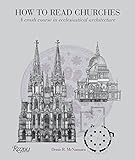All Categories
Catholic Church Architecture and the Spirit of the Liturgy
Share Tweet
*Price and Stocks may change without prior notice
*Packaging of actual item may differ from photo shown
- Electrical items MAY be 110 volts.
- 7 Day Return Policy
- All products are genuine and original








About Catholic Church Architecture And The Spirit Of The
Product Description This unique book delves into the deep meanings of liturgical art and architecture, and by association, the Sacred Liturgy itself. It is meant to help pastors, architects, artists, members of building committees, seminarians, and everyone interested in liturgical art and architecture come to grips with the many competing themes which are at work in church buildings today. The object of Catholic Church Architecture and the Spirit of the Liturgy is help the reader to drink deeply from the wells of the tradition, to look with fresh eyes at things thought to be outdated or meaningless, and glean the principles which underlie the richness of the Catholic faith. Part one presents an emerging area of study: Architectural Theology Part two introduces the readers for the first time to the scriptural foundations of church architecture Part three focuses on the classical tradition of architecture Part four examines iconography as eschatological and Part five concludes with a discussion of the Twentieth Century and where we are now in the Age of the Church. Catholic Church Architecture and the Spirit of the Liturgy is a foundational sourcebook for studying, designing, building, and renovating Catholic churches, this book is intended to find the middle of the road between differing and sometimes conflicting theories of liturgical architecture. It will give architects and building committees the theological language and tools to understand the elements of church design by examining past architecture and will help decision makers link these principles to their current building projects. Winner of two Catholic Press Association awards: Design and Production, Second Place History, Second Place Review "I believe that this book by Denis McNamara is the kind of mystagogy Pope Benedict called for. I believe it is the kind of mystagogy the ancient Fathers would wish for their own churches. Dr. McNamara knows that to contemplate sacred space is not merely to trace influences in an evolutionary diagram back to Vitruvius. To understand a church requires more than a genealogy of tourist postcards. It requires an interior life. It requires a hope of heaven. It requires a revelation. It calls for mystagogy. All of which are evident in the pages of this book. Dr. McNamara has given us something we desperately need, something rare and great: at once an achievement of scholarship, a work of mystagogy, and an act of piety." --Scott Hahn, Founder and Director, St. Paul Center for Biblical Theology "With his Catholic Church Architecture and the Spirit of the Liturgy, Dr. Denis McNamara has made a most significant contribution to the theology of the Sacred Liturgy, in the line of the luminous writings on the subject by Pope Benedict XVI, both before and after his election to the See of Peter. Dr. McNamara argues convincingly and well that the lex aedificandi, that is, the norm of building in what pertains to churches and chapels, like the lex orandi or norm of praying, by its very nature, gives expression to the lex credendi or norm of faith itself. Among the many rich elements of Dr. McNamara's profound and comprehensive study of Sacred Architecture is his most timely application of the "hermeneutic of continuity," that is, the interpretation of Sacred Architecture in the light both of the roots of Christian worship in Jewish worship and of the organic development of Sacred Worship, down the Christian centuries. Dr. McNamara helps us to understand how a church or chapel is at one and the same time the House of God and the House of the Church. I wholeheartedly commend the work of Dr. McNamara to all who want to deepen their understanding of sacred architecture, who desire to be schooled in the Church's lex aedificandi. In a particular way, it is my hope that his study will become a standard reference for seminarians and priests, and for all who have responsibility for the building and mainten



















